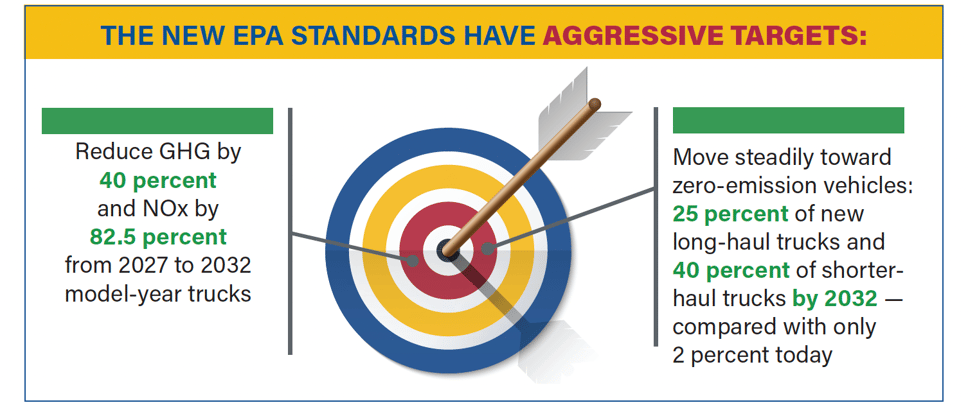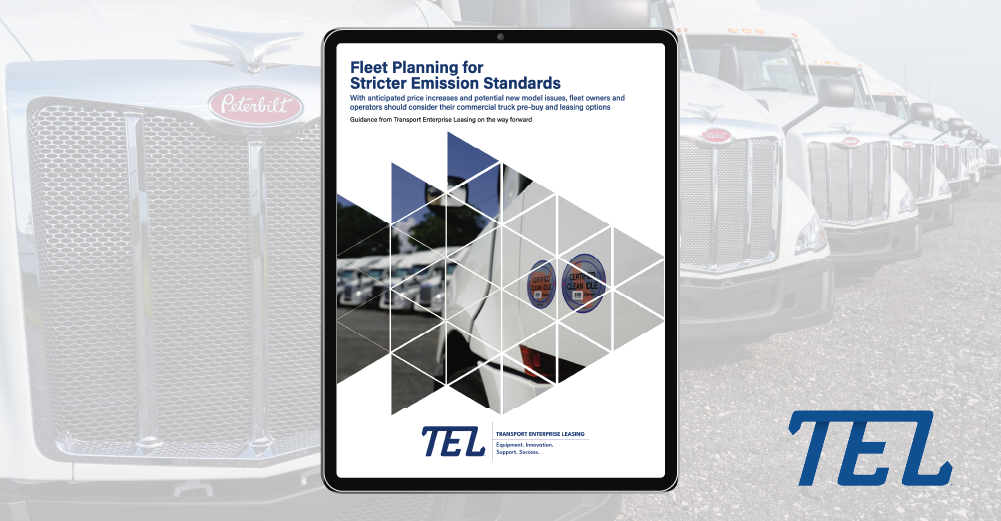As the trucking industry faces stricter emission regulations from the EPA, fleet owners must rethink their strategies to stay compliant while maintaining profitability.
The EPA’s new Greenhouse Gas Emissions Standards for Heavy-Duty Vehicles, set to roll out between 2027 and 2032, aim to significantly reduce nitrogen oxide (NOx) and greenhouse gas (GHG) emissions from trucks. These regulations will push for a shift towards zero-emission vehicles (ZEVs), with aggressive targets such as 25% of new long-haul trucks being zero-emission by 2032.

Challenges Ahead:
The trucking industry has previously struggled with the adoption of new technologies, facing costly breakdowns and maintenance issues during the last major emissions overhaul. Similar concerns are surfacing with the upcoming regulations, compounded by expected price hikes of $10,000 to $25,000 per truck during the during the regulatory phase-in period.
Strategic Fleet Planning:
Transport Enterprise Leasing (TEL) advises fleet owners to consider pre-buying trucks before the 2027 model year to avoid the uncertainties of new technologies and rising costs. To offset the increase, pre-buy activity is anticipated over the next two years as operators purchase more equipment using current technology before the new models arrive.
Leasing as a Viable Option:
For those wary of large capital investments, leasing provides a flexible and cost-effective alternative. TEL offers customized leasing programs that allow fleet owners to navigate the evolving regulatory landscape with less financial risk, ensuring continued operation and profitability.

As the industry prepares for these significant changes, strategic planning and proactive decision-making will be crucial. TEL stands ready to assist fleet owners in transitioning smoothly to cleaner technologies while maintaining a strong business foundation.
The changes are coming, are you ready? Download the complete White Paper that details key changes and preventive measures you can take to be prepared.